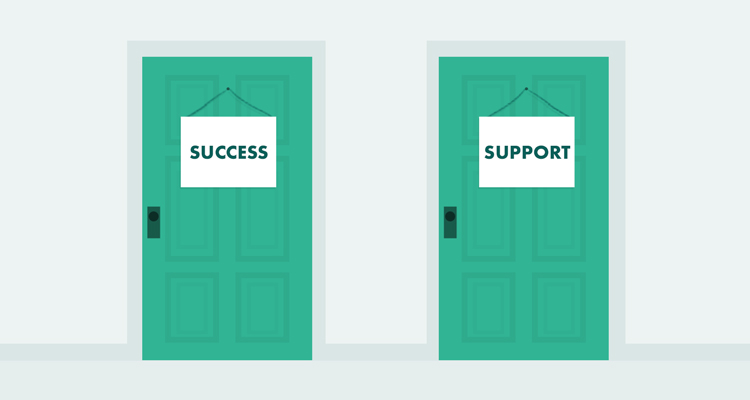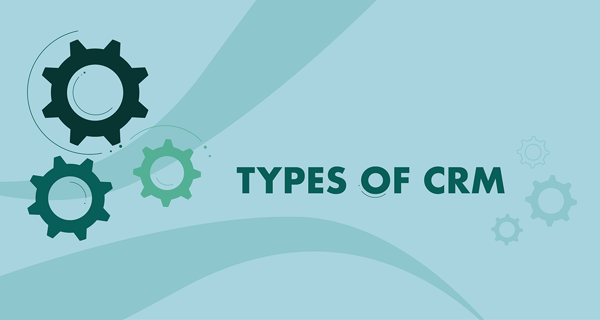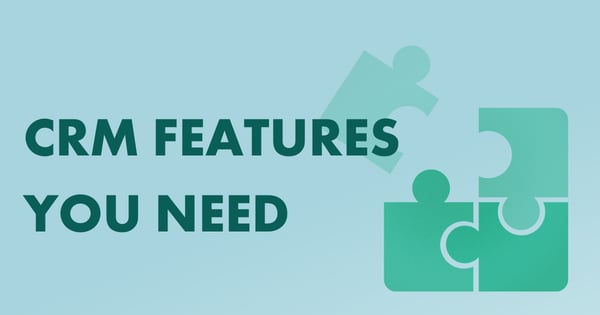Customer Success is one of the biggest buzzwords in subscription and recurring revenue businesses in recent years.
The reason why it’s become such a hot topic is simple.
According to Profit Well, companies with a dedicated Customer Success team generate:
- A 50% to 125% increase in expansion revenue
- A 10% boost in net dollar retention
- A 15% to 27% drop in gross churn
Couple this with evidence from LinkedIn that Customer Success was one of the fastest growing and most promising careers in 2020, and it’s clear that Customer Success has never been more “front of mind” for future-focused business leaders worldwide than it is right now.
However, not all companies have adopted Customer Success.
For instance, our own research found that only 31% of SaaS companies have a dedicated Customer Success team.
Worse still, 36% of companies see no difference between Customer Support and Customer Success.

Are they the same? Absolutely not.
Despite their similar sounding names, Customer Success and Customer Support are two very different disciplines. So, with that in mind, we’ve outlined 4 key areas that help identify exactly how different Customer Success and Customer Support really are.
Proactive vs Reactive communication
Think fast:
Your boat has sunk, and you are stranded at sea.
You need to stay above the water.
Would you prefer the captain of the ship was proactive or reactive?
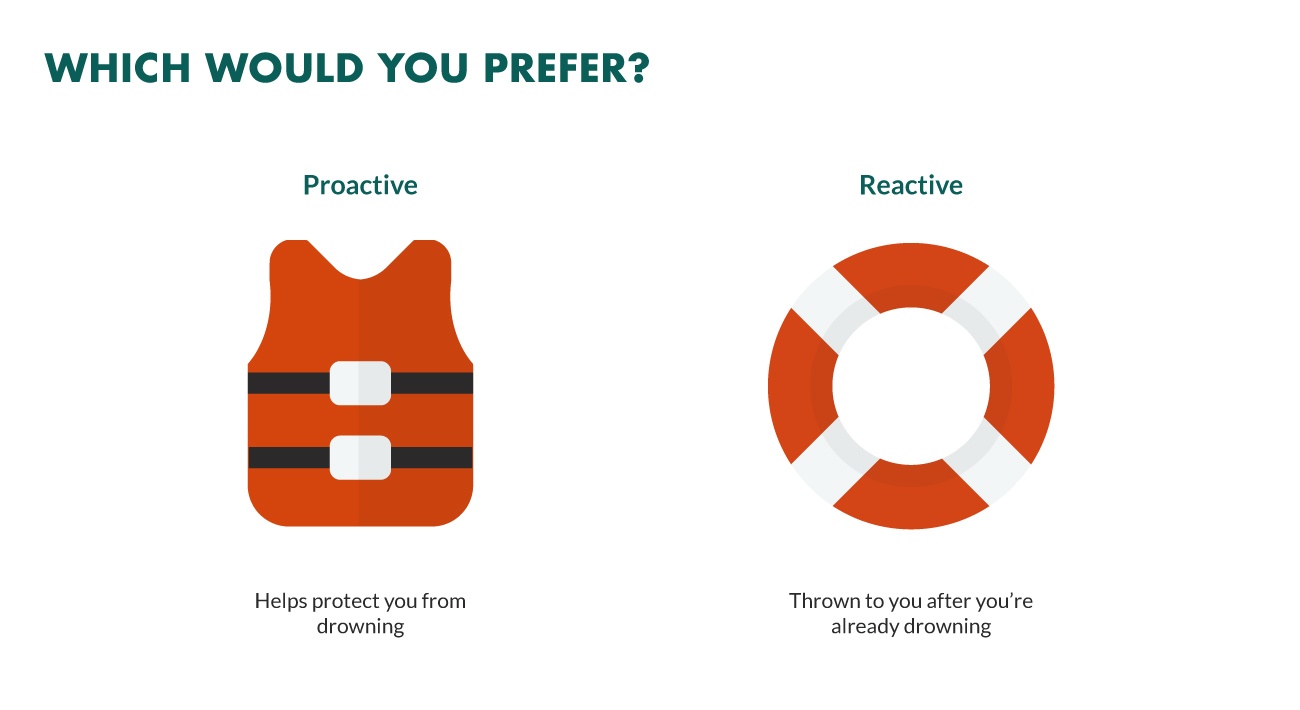
You chose proactive, right?
It makes sense and it’s a good analogy of how companies communicate with their customers.
One is based on what happens in the moment while the other is pre-emptive.
When it comes to Customer Support, there is a heavy emphasis on reactive communication. This means that a Customer Support team will wait until a customer makes the first move and reaches out to them before they can take action.
Typically, this will take the form of calling a support line, submitting a support ticket, or even writing a letter of complaint. Only when the Customer Support team receives this communication, can they start working with the customer.
By this stage, the Customer Support team is on the back foot, often making it difficult to realign the customer’s expectations.
In stark contrast, Customer Success is about consistent, proactive engagement with customers. This means not waiting for customers to have an issue with a product and contact your team. Instead, you should be pre-empting issues and ways to achieve outcomes by reaching out to them first.
This will often mean a combination of well-planned “tech touch” engagement through content, email marketing and automated messaging, combined with strategic interventions and business review calls done in person.
By being proactive, the Customer Success team has the opportunity to put your company in control of the communication – helping you build a long-term relationship with your customers.
Building long-term relationships with customers
First of all, a Customer Support team should have very different goals than those of a Customer Success team. Yes, they both deal with customers, but this is where the similarity ends.
A well-drilled Customer Support team should be set up to efficiently and effectively field customer support requests. Typically, these will range from “how do I …?” through to complaints or refund requests.
The goal of a Customer Support team is to represent the best interests of the company in supporting customers with a product or service. They want to process one-off support requests, often in a transactional fashion, rather than building ongoing relationships with customers.
In stark contrast, a Customer Success team acts a little differently. Its key goal is to build and maintain an ongoing, profitable, and mutually beneficial relationship between the company and the customer.
This means their job is to focus on helping customers to unlock the full value of the product and to achieve their desired business outcomes.
By doing this, not only will a good Customer Success representative be able to keep a customer happy and retain their business for longer, but they’ll also be able to increase the lifetime value of that customer through well-placed upsells, cross-sells, increased licence usage, and other revenue expansion opportunities – and that where the value lies in a relationship based model.
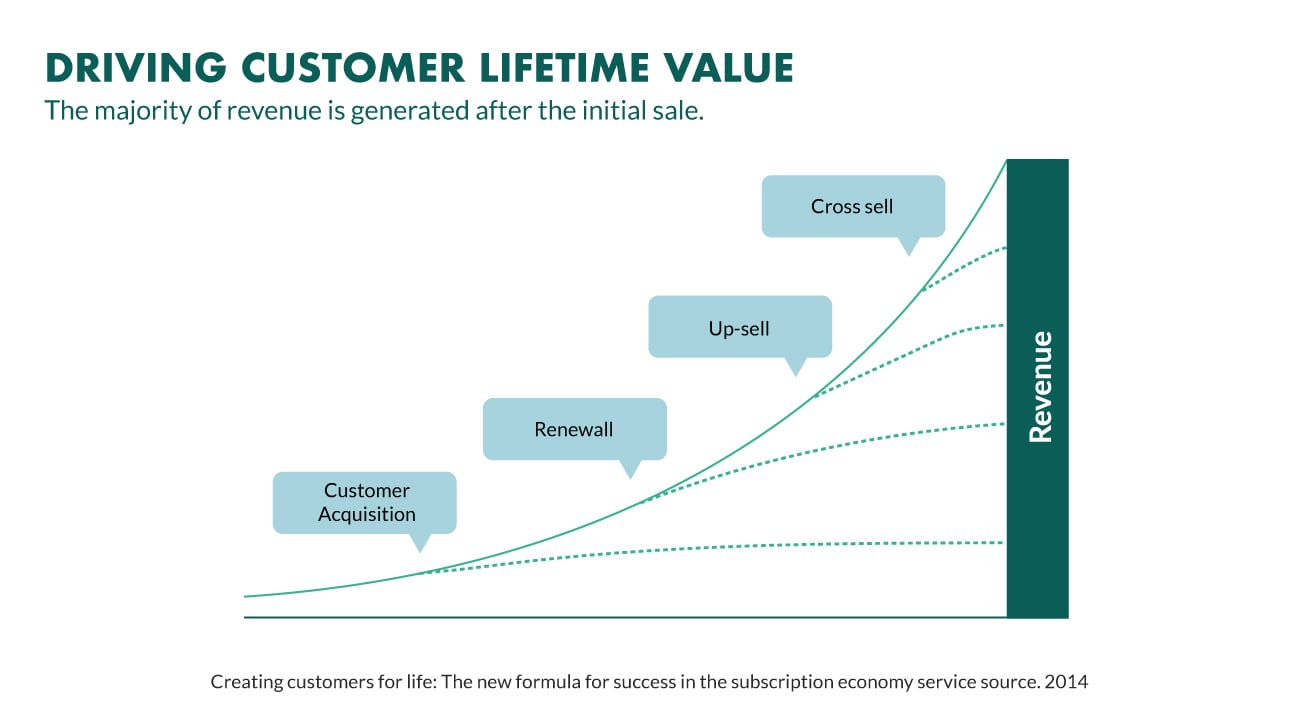
The key to doing this effectively is to make sure that all the potential expansion opportunities are very closely aligned with the customer’s own business goals and objectives for using the product.
By helping your customer get the most out of your product and working with them to uncover their ongoing needs and growth strategies, you’ll be in a good position to become a trusted partner, retaining them as a customer for years to come and expanding the value of their account in the process.
Multiple customer-focused touchpoints
Generally speaking, Customer Support has very specific and linear actions to follow in a repetitive process, often centred around inbound calls, email support or live chat requests.
Meanwhile, Customer Success is a lot more fluid by nature and can cover a number of different activities, some of which include:
- QBR – The Quarterly Business Review is a catch-all term given to periodically scheduled calls or meetings to understand the customer’s pain points and expansion plans in order to help them be more successful with your product over the upcoming period. Depending on the scale of your customer this could be monthly, quarterly, biannually, or annually.
- Content production – In order to help your customers to be more successful with your product, most Customer Success professionals will have to be able to produce or curate content. This could be anything from a webinar or email newsletter, through to specific user guidance information. It all depends on the customer needs you identify as you work with them.
- Training – Whether its showcasing new features to your customers, refreshing their knowledge, or even introducing them to a product for the first time, being able to effectively train users is an invaluable part of the Customer Success toolkit.
- Regular catch up calls / emails – To make sure that you maintain the relationship with your customers outside of the more formal QBRs, you’re going to want to keep in regular contact – especially with your higher value customers. Regular catch up calls can help you intercept any issues before they become problems and help sow the seeds for expansion ahead of the next QBR.
- Expectation setting – Whether it’s scoping change projects, providing indicative costs, or offering feedback on product developments, one of the key ways to keep your customers happy is to carefully manage their expectations. Do this right and you’ll become a trusted partner for years to come.
Measuring customers over time
One of the most obvious indicators of the differences between Customer Support and Customer Success are around the key metrics you should be monitoring.
Customer Support metrics tend to centre around the volume of inbound help requests and how quickly they’re processed. They might include things like, number of calls/tickets, average response time, average resolution time, number of open tickets, etc.
These are metrics that a customer service team can report on a daily or weekly basis.

Customer Success metrics are different – the key metrics you should focus on will shift and grow on a customer by customer basis over a prolonged period of time. They’re a great way to understand how your proactive approach is improving your customers relationship with your product over time.
In our own research, we found out that the leading KPIs when it comes to measuring customer success are customer churn, product engagement, NPS and customer health.
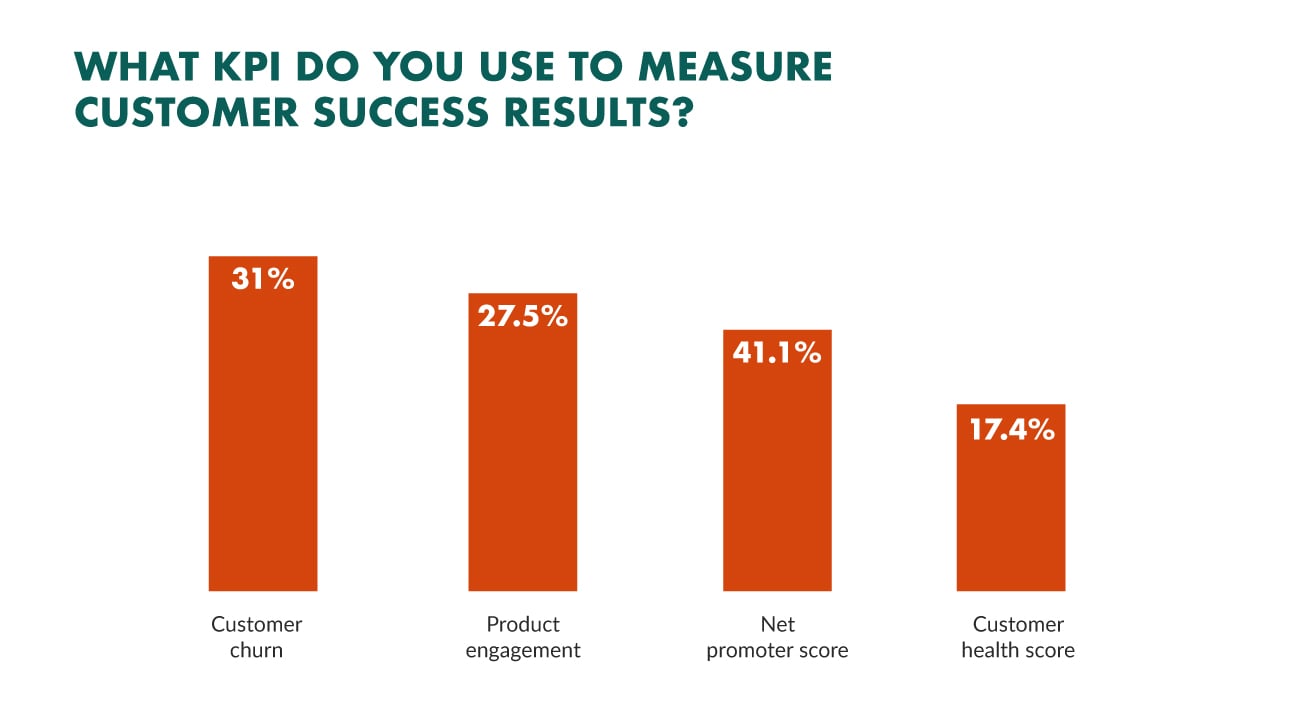
Here’s how these metrics impact your business:
- Customer churn – churn rate gives you an indication of the percentage of customers who stop doing business with you each month or each year. The fewer number of customers that leave you, the greater your profits.
- Product engagement – By looking at things like number of logins, frequency of feature use, or number of successful uses (e.g. to close a sale or perform a specific action), this will give you an idea of how vital your product is to your customer. If you find they’re not using it, you need to be proactive in helping them unlock its true potential.
- NPS – Net Promoter Score indicates the customer’s overall happiness and success with your product. If they rate your product a 9 or 10 then they’re likely to recommend you to others, but if you’re getting a score of 6 or less, you should consider that customer to be at risk of churning.
- Customer Health Score – you can devise this score to factor in a number of different metrics and KPIs that are specific to your product and your users. When combined into a single figure, it can give you an “at a glance” idea of how specific customers are getting on and which may need further unscheduled intervention.
- Support engagement – If your customers are quick to contact your support team or visit your online support resources, this means one of two things: either they’re struggling to use your product and need guidance and training, or they’re trying to maximize their use of your product. This is an ideal opportunity to be proactive in helping them achieve their goals.
Because Customer Success is measured on a higher level and plays an overall role in the growth of your business, it’s not something that can be reported on a weekly basis and takes time to improve. With Customer Success, you’re making long-term improvements that can be measured on a 6-12-month basis, or in some cases, over a 1-2-year period.
Conclusion
Customer Success and Customer Support may sound like they have a lot in common. The truth is that while they’re both customer-focused, they exist for entirely different reasons.
Awareness of Customer Success is growing exponentially every year as more and more businesses move into the subscription economy and seek ways to retain their customers and grow the value of those relationships in the long-term.
It’s this long-term focus that really differentiates Customer Success from Customer Support and is demonstrated through a number of key approaches, such as proactive communication, building ongoing relationships, engaging across multiple touchpoints, and continuing to measure performance over time.
So, the next time you find yourself sailing the high seas, remember to take your lifejacket with you.
